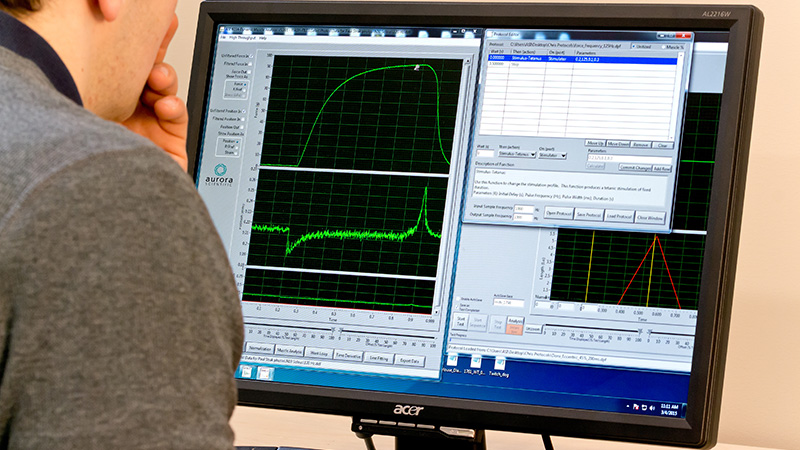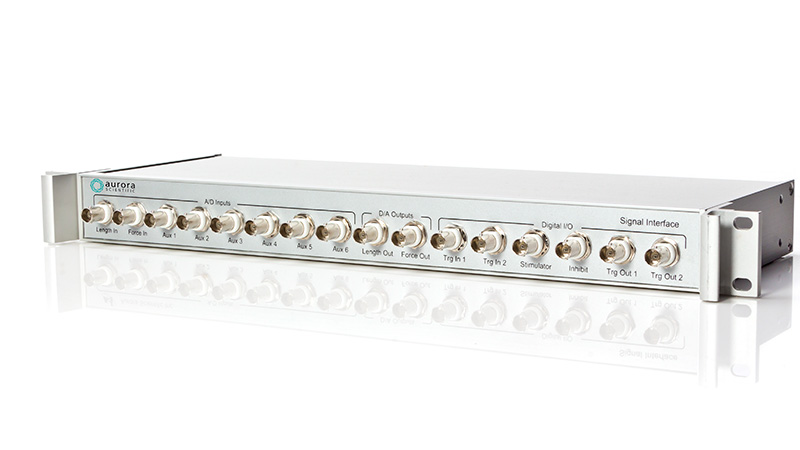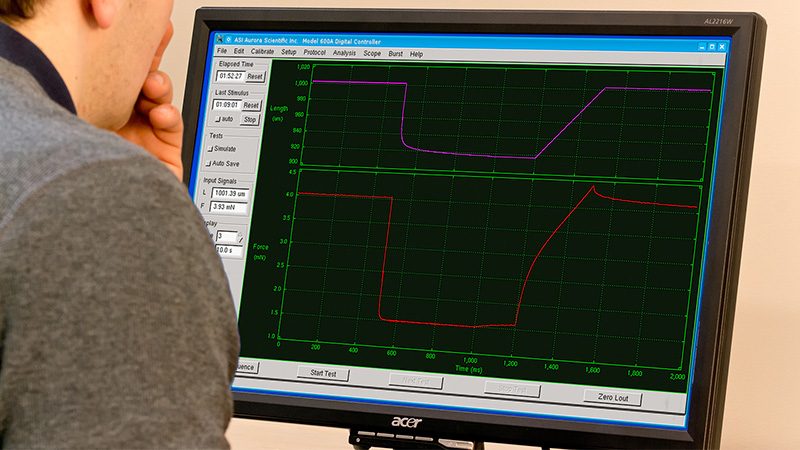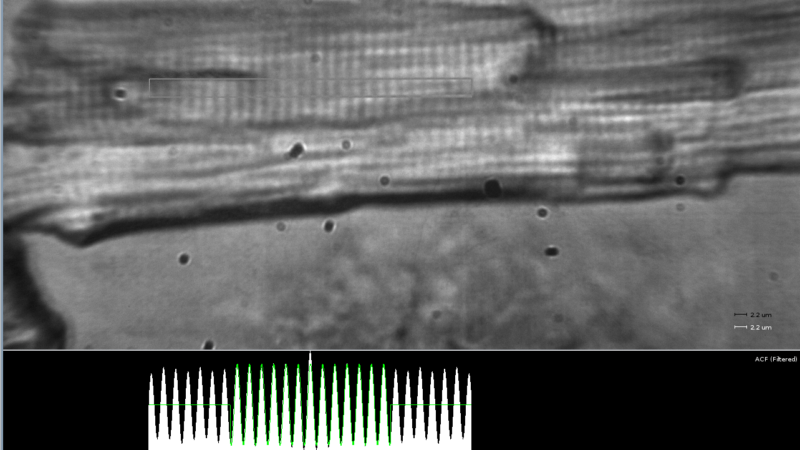Muscle Data Acquisition Hardware & Software
Complete Systems

600A: Real-Time Muscle Data Acquisition and Analysis System
A precision, real-time controller and data acquisition system for Aurora Scientific apparatus and measurement devices

605A: Dynamic Muscle Data Acquisition and Analysis System
Integrated, Windows based, powerful and complete data acquisition and analysis system handling the entire data collection, control and analysis of muscle contractile experiments
Hardware
The 604A Analog-to-Digital Interface was designed to enable physiology researchers to easily interface a Dual-Mode muscle lever, force transducer, high-speed length controller and stimulator to a National Instruments PC-based A/D card. The 604A Interface consists of a 1U (1.75”) high, 19” wide, rack-mount case with BNC connectors on the front and a ribbon cable connector on the back. 604B and 604D models accommodate four or two setups (respectively), while the 604B also provides integrated stimulator control.
Software

615A: Dynamic Muscle Control and Analysis Software
Dynamic Muscle Control and Analysis Software Suite handles experimental control, data collection and data analysis for muscle contractile experiments
Content for the Muscle Physiologist
Best of 2025: Pushing Scientific Boundaries
Continuing our annual end-of-year tradition, this year’s final publication review spotlights the standout studies that captured the imagination of the field, pushing the boundaries of sensory ...
Advancing Sarcopenia Research: CUHK Lab Unveils Early NMJ Deficits in Aging with Aurora Scientific’s 1200A
Recent interview with Louis Cheung, PhD and Can Cui, PhD from the CUHK Department of Orthopaedics and Traumatology about Sarcopenia and NMJ Function in ...
Calling in Reinforcements: Tube Repair of an ASI 400 Series Force Transducer
A step-by-step tech cast on how to perform a tube repair for Aurora Scientific's 400 Series Force Transducers, Katherine will share tips, tricks and best practices for best ...






